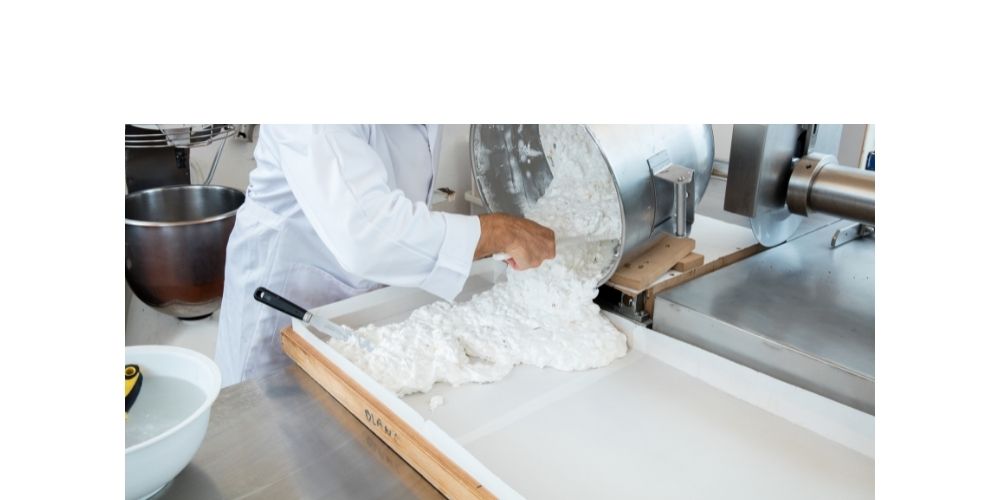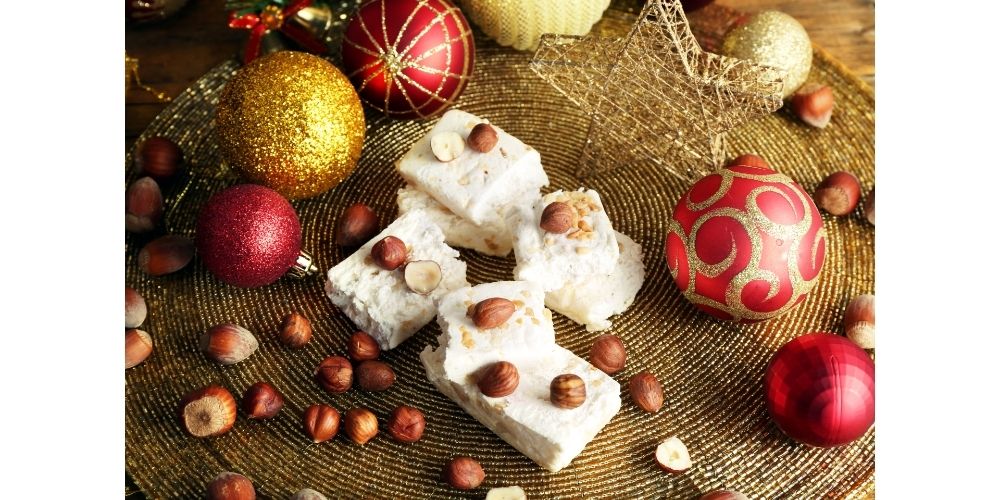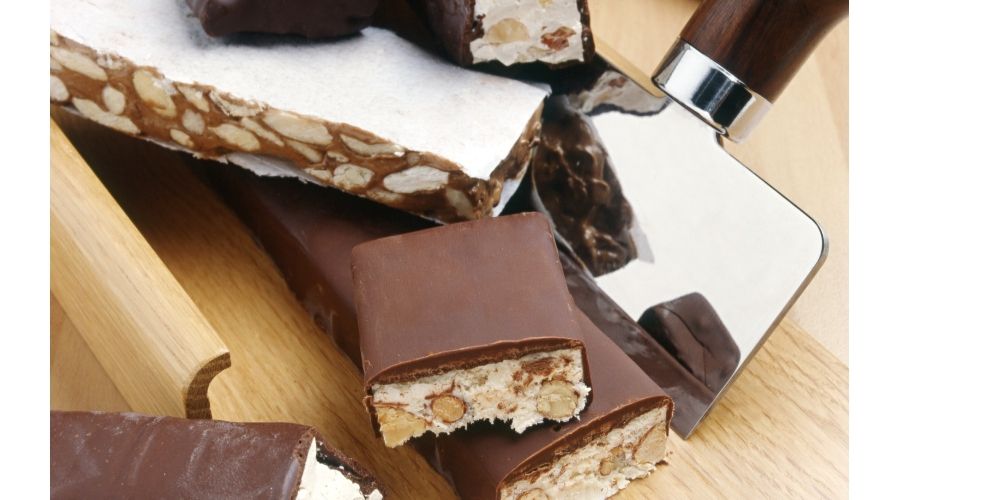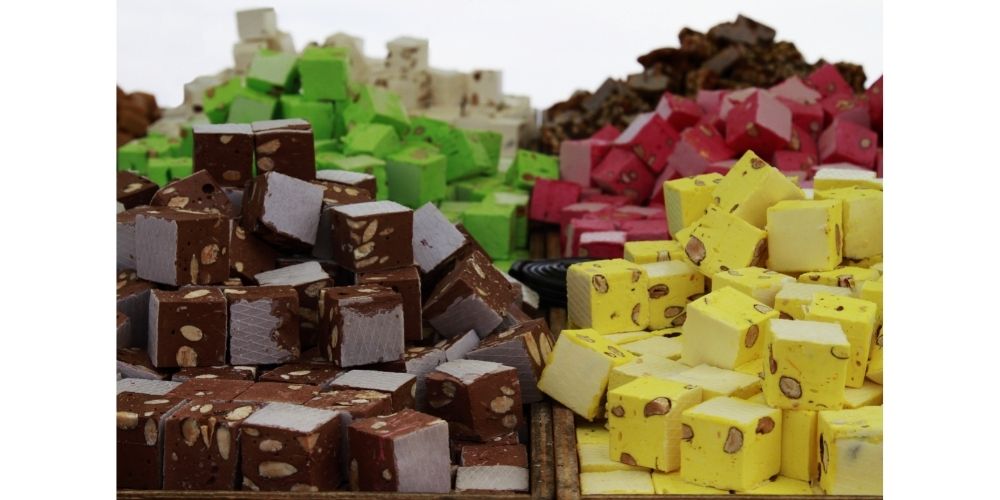Nougat, one of the leading products of Avellino confectionery industry, is a speciality that has crossed the borders of Campania and those of Italy. Especially during the Christmas period for those living in northern Italy or even abroad, it is not uncommon to come across the best brands of nougat from Irpinia. The southerner living in the North of Italy or abroad has a special bond with his traditions, the heart of his homeland. Have you ever tried this unparalleled goodness? If your answer is no, then now is the time to do start a journey through the flavours and gastronomic culture of Avellino.
The origins of Nougat

First of all, nougat is a dessert that has given rise to quite a few disputes and controversies regarding its paternity, origins and actual invention. The only certain thing is that the recipe, with its respective variants, belongs to the Mediterranean basin, an area where the cultivation of Corylus avellana is widespread. In reality, the attribution of this delicacy is not simple, especially if we think of the dominations and historical events that have taken place over the centuries. According to some hypotheses, it was an Arab sweet, then exported to Spain and finally to Sicily.
However, some Latin writers and historians' written and more reliable sources seem to leave no room for doubt. For example, in his work De Agricultura, Cato the Censor refers to a Carthaginian dish made with honey, flour, eggs, and fresh cheese. Titus Livius and Martial testify to the existence of Cupedia, a Latin term from which the Irpinian word cupeto is used for nougat. According to a legend, the Samnites, who defeated the Romans during the second Samnite war (326-304 BC), offered the losers a very soft dessert made of hazelnut paste and honey, probably the ancestor of today's nougat.
The Original Nougat

If in Irpinia the terms cupeto to indicate nougat (in Italian torrone) and cupetari to indicate those who produce and sell it during patronal festivals and fairs have been retained, let's see why it is called torrone. The name of this delicacy derives from the Latin verb torrere, meaning to toast, to roast, with particular reference to the toasted hazelnuts or almonds that stud this ivory-coloured bar. In Avellino and its province, the hazelnut is the queen of agricultural production, one of the essential elements of nougat but in general of the confectionery industry. Roasted hazelnuts or almonds from Irpinia are added to a mixture of egg whites, honey and sugar. An unmistakable scent, that of honey, also from zero km. This is the secret of such a popular product: the authenticity and quality of the ingredients.
In Irpinia, nougat can be found at any time of year, even in summer, despite the heat. So, don't worry, you can find and taste it at any time! Undoubtedly linked to the Christmas tradition, when it shares the stage with dried fruit and other typical specialities, this gastronomic boast is also associated with the cult of the Madonna of Montevergine. The Juta a Montevergine, the procession in which crowds of pilgrims walk to the Sanctuary, is very popular. Along the route, the faithful refresh themselves with many delicacies including, above all, nougat.
Itinerary in the flavors of the tastes and recipes in the avellinese

If we want to take a journey through taste and discover this typical local product, one of the first stops is Ospedaletto d'Alpinolo, a small village about 10 km from the Avellino. Here, nougat is produced according to ancient methods and, naturally, using local, zero-km ingredients. Honey, hazelnuts, egg white and wafers give life to a unique and unmistakable taste.
About 50 km from Ospedaletto, but 40 km from Avellino, we find another municipality with a long consolidated confectionery tradition: Grottaminarda. The protagonist, in this case, is the famous spantorrone, a softer and crumblier variant of the classic torrone. Walnuts and hazelnuts flavoured with vanilla are added to the honey and egg white paste. The mixture poured into moulds, is then covered with slices of sponge cake soaked in rum and Strega liqueur.
Throughout the province of Avellino, pantorrone is produced everywhere. Basically, it consists of nougat and sponge cake alternating in layers covered with a tasty layer of dark chocolate. Eggs, sugar, flour, honey, almonds, vanilla flavouring, Strega liqueur (or rum) and cocoa for the outer covering are processed to create a unique and inimitable mix.
Where the cultivation of chestnuts prevails (Bagnoli Irpino, Cassano Irpino and Montella), we find chestnut pantorrone or spantorrone. In addition to the classic dough, the preparation of this particular version involves the use of a filling of chestnuts, either candied or in the form of a paste, cocoa and rum.
Dentecane: the hamlet with the highest concentration of nougat factories in Italy

When talking about nougat and records, we cannot forget Dentecane, a small hamlet in the municipality of Pietradifusi. The town, located in the lower Irpinia halfway between Avellino and Benevento, has an unusual record despite having only 600 inhabitants. Despite its small size, it boasts the highest concentration of artisan nougat factories in Italy. There are no less than four (just a few dozen metres apart along with Via Roma) producers who, from generation to generation, proudly carry on this tradition, which is also of great economic importance.
Confectionery production always respects and keeps alive the artisanal and genuine character of the ancient recipe. Top-quality raw materials from the local area are carefully selected and processed according to the old methods. The new flavours, assortments, formats, fillings and variations, capable of satisfying all palates, will never betray the traditional recipe.










Lascia un commento